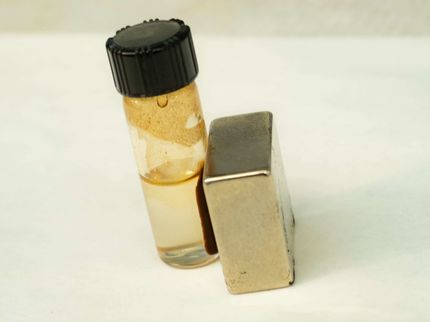Nanoparticles light up tumors
Glowing 'Cornell dots' can show surgeons where tumors are
According to research at Memorial Sloan-Kettering Cancer Center (MSKCC), Cornell dots, also known as C dots, are biologically safe and stable and small enough to be easily transported across the body's structures and efficiently passed through the kidneys and out in urine.
A single dot consists of several dye molecules encased in a silica shell that can be as small as 5 nanometers in diameter. The silica shell, essentially glass, is chemically inert. Coating the dots with polyethylene glycol, a process called PEGylation, further protects them from being recognized by the body as foreign substances, giving them more time to find targeted tumors.
The outside of the shell can be coated with organic molecules that will attach to such desired targets as tumor surfaces or even locations within tumors. The cluster of dye molecules in a single dot fluoresces under near-infrared light much more brightly than single dye molecules, and the fluorescence will identify malignant cells, showing a surgeon exactly what needs to be cut out and helping ensure that all malignant cells are found. According to MSKCC researchers, the technology also can show the extent of a tumor's blood vessels, cell death, treatment response and invasive or metastatic spread to lymph nodes and distant organs.
Cornell dots were developed in 2005 by Hooisweng Ow, then a graduate student working with Ulrich Wiesner, Cornell associate professor of materials science and engineering. Their refinements of the dot design and experiments in mice at MSKCC are reported in Nano Letters (Vol. 9 No. 1) by Wiesner, Dr. Michelle Bradbury, a physician-scientist specializing in molecular imaging and neuroradiology at MSKCC, and colleagues.
"Highly sensitive and specific probes and molecular imaging strategies are critical to ensure the earliest possible detection of a tumor and timely response to treatment," said Bradbury. "Our findings may now be translated to the investigation of tumor targeting and treatment in the clinic, with the goal of ultimately helping physicians to better tailor treatment to a patient's individual tumor."
Most read news
Topics
Organizations
Other news from the department science

Get the analytics and lab tech industry in your inbox
By submitting this form you agree that LUMITOS AG will send you the newsletter(s) selected above by email. Your data will not be passed on to third parties. Your data will be stored and processed in accordance with our data protection regulations. LUMITOS may contact you by email for the purpose of advertising or market and opinion surveys. You can revoke your consent at any time without giving reasons to LUMITOS AG, Ernst-Augustin-Str. 2, 12489 Berlin, Germany or by e-mail at revoke@lumitos.com with effect for the future. In addition, each email contains a link to unsubscribe from the corresponding newsletter.



















































